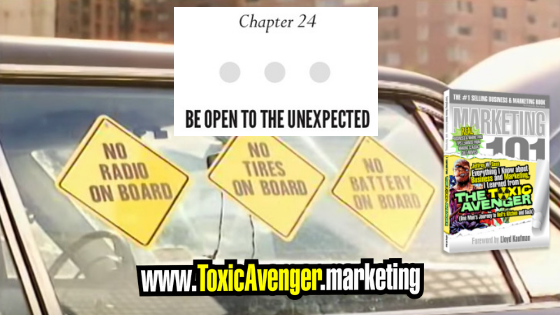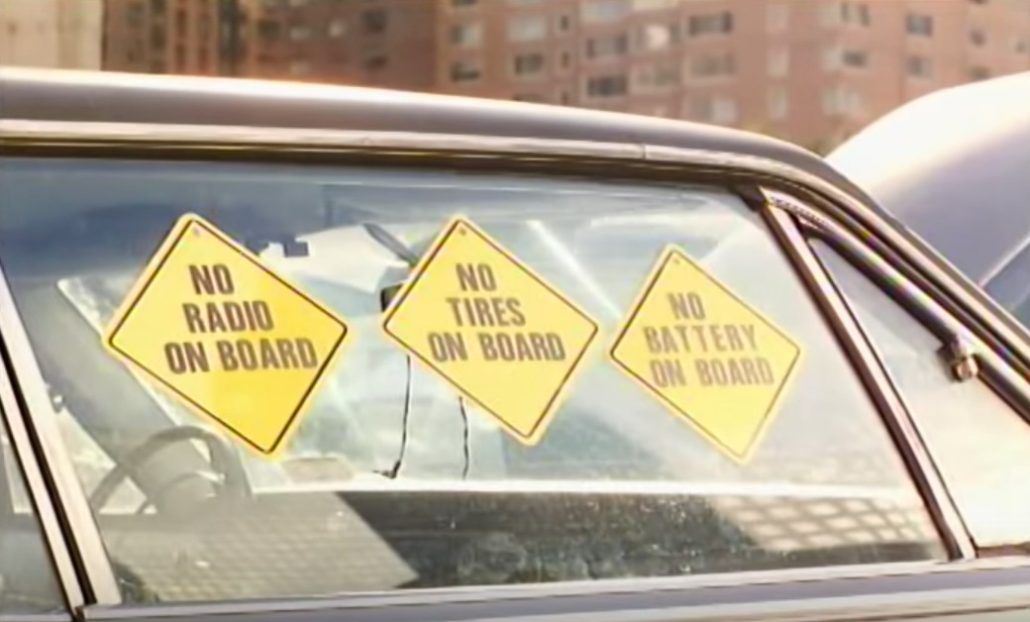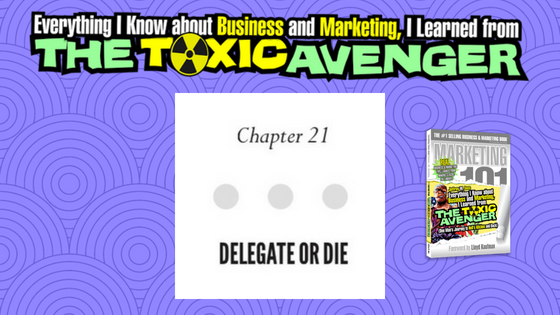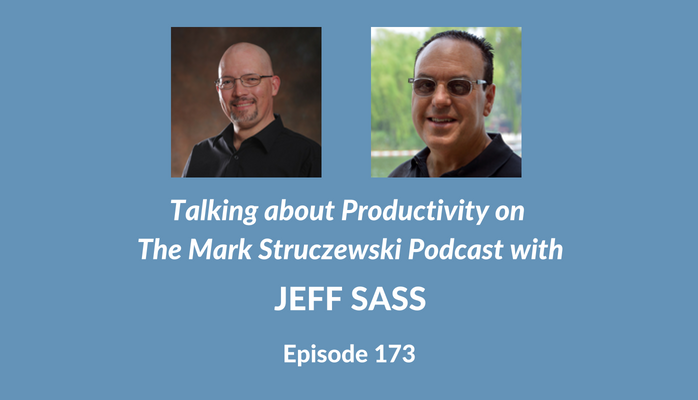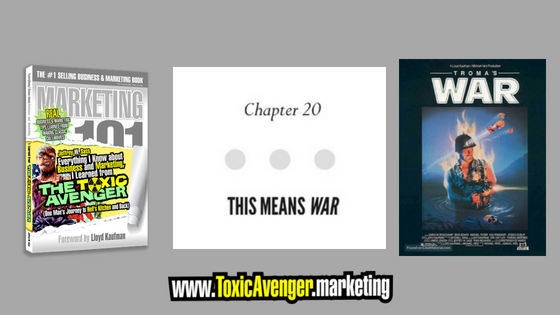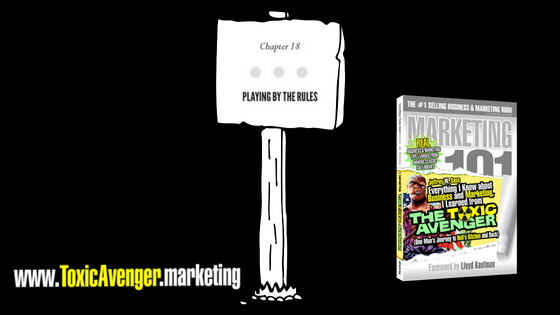Chapter 24: Be Open to the Unexpected
Greetings from Tromaville! Here is Chapter 24 of my book, Everything I Know about Business and Marketing, I Learned from THE TOXIC AVENGER. This chapter shares the lesson that inspiration comes in many forms and often in unexpected shapes and sizes. You need to be ready to see it, and embrace it!
If you haven’t done so already, you can read the Foreword by Troma co-founder, Lloyd Kaufman, and the Introduction to the book as well as Chapter 1, 2, 3, 4, 5 and 6, 7 ,8, 9, 10, 11, 12, 13, 14, 15, 16, 17, 18, 19, 20, 21, 22 and 23. You can also see me read a few chapters live, along with Lloyd and Toxie, at Florida Supercon as well as a few chapters I read on Facebook Live. Stay tuned for additional chapters to be published here. If you like what you read and can’t wait for more, please don’t be shy. You can buy the book now on Amazon (and also please don’t be shy about sharing, and reviewing the book when you do read it.) Both Toxie and I greatly appreciate your support! – Jeff Sass
Chapter 24: Be Open to the Unexpected
You never know where inspiration will come from. The key is to be open to seeing it and acting upon it when it decides to burst in on you unexpectedly.
Back in the days when our cars were not actually computers on wheels, there was a fad when anyone with a child would stick a suction cupped diamond-shaped yellow sign to the window of their car that said “Baby on board,” the idea being that other drivers would be more careful driving around a car that was transporting a young, defenseless human. Parents loved it, and the signs became a literal sign of the times. You’d see them stuck inside vehicle windows everywhere. Whoever came up with those signs was making serious bank. And of course, the more popular they became, the riper they became for being copied and parodied. Soon, as an attempt to deter would-be robbers, some cars started posting the same yellow diamond sign that said “No radio on board.”
There’s a running visual joke throughout Sgt. Kabukiman NYPD, where a parked car is broken into, and then we see it has one of the “No radio on board” signs, in this case presumably left by the lowlifes who just broke in and stole the car’s radio. Throughout the film, we revisit the car as more things are stolen, and more yellow suction cup signs are added to the window. Eventually, we see the car, up on blocks, stripped bare, with a “No tires on board” sign added to the crowded windows. Hahaha. Corny but timely (those yellow suction cup signs were really a thing).
Whether you thought the car gag was funny or not, there’s a story behind how it ended up in the script. Lloyd and I were writing the screenplay for Sgt. Kabukiman NYPD at his place on the Upper East Side. As we sat in the small room (the former closet that was now “the computer room” so we could type our script in bits and bytes), we were interrupted by the persistent shrill piercing sound of a car alarm. Any excuse to not write was welcome, so we stopped what we were doing (or not doing) and gathered by the second-story window.
There, on the street below us, we watched the dude who had just smashed the window of the car parked on the street in front of the Kaufmans’ humble abode. It was summer time, hot, and the window was already half-way open to welcome the occasional breeze. Instinctively we screamed out the window in unison, “Hey! Get away from that car!” Startled, the would-be car thief looked up at us and started to run. Without hesitation, Lloyd and I looked at each other, turned, and bounded down the stairs and out the front door onto the street. A quick glance at the smashed car window and requisite glass on the curb beside, and another glance down the street toward the corner where our culprit could be seen running from the scene.
Perhaps it was because we were in the midst of writing the story of a crime-fighting New York City cop who turns into a crime-fighting, kimono-wearing superhero, or perhaps because we were just a couple of nerdy idiots, but whatever reason we felt compelled to run down the block screaming “stop, thief!” Needless to say, the thief did not stop. The jaded New Yorkers around us looked at us as if we were indeed a couple of nerdy idiots. Huffing and puffing from our brief, unexpected bout of cardiovascular activity, we put our tails between our legs and dejectedly walked back to Lloyd’s. We were clearly not effective crime-fighters in real life. So we trudged back up the stairs to the computer closet and our screenplay in progress and memorialized the experience by writing in the aforementioned car gag.
Inspiration comes in many forms and often in unexpected shapes and sizes. You need to be ready to see it and embrace it (even if doing so makes you appear to be a nerdy idiot).
•••
That’s Chapter 24 – Are you always ready for the unexpected? What random events have influenced the outcomes of your project? Stay tuned for Chapter 25: “Influencing the Influencers” which shares the lesson of being real, authentic and self-aware, and how those traits have helped Troma influence filmmakers and celebrities over the years, from Quentin Tarrantino to Peter Jackson, and countless others.
The book in previous posts:
Foreword, by Lloyd Kaufman
Introduction: Lights, Camera, Action!
Chapter 1: Welcome to Tromaville!
Chapter 2: The Troma Building
Chapter 3: Meet the Moguls
Chapter 4: Trailer Trash
Chapters 5 and 6: Working FREE-lance & Becoming a Full-time Tromite
Chapter 7: Branding Begins on the Ground Floor
Chapter 8: The Power of We
Chapter 9: Old Yeller (and Be Your Brand)
Chapter 10: Find Something to Believe In
Chapter 11: Show Up!
Chapter 12: Sink or Swim!
Chapter 13: Embrace your Vision and Culture!
Chapter 14: Strategic Partners – Burn Houses, Not Bridges
Chapter 15: If You Don’t Want to Swallow a Frog, Start with a Stunt
Chapter 16: Repurpose, On Purpose!
Chapter 17: Always Salute the Schwag!
Chapter 18: Playing by the Rules
Chapter 19: Fix it, or Forget it… Fast!
Chapter 20: This Means WAR!
Chapter 21: Delegate or Die!
Chapter 22: Location, Location, Location
Chapter 23: Everyone is Expendable (Especially if you Wear a Mask!)


